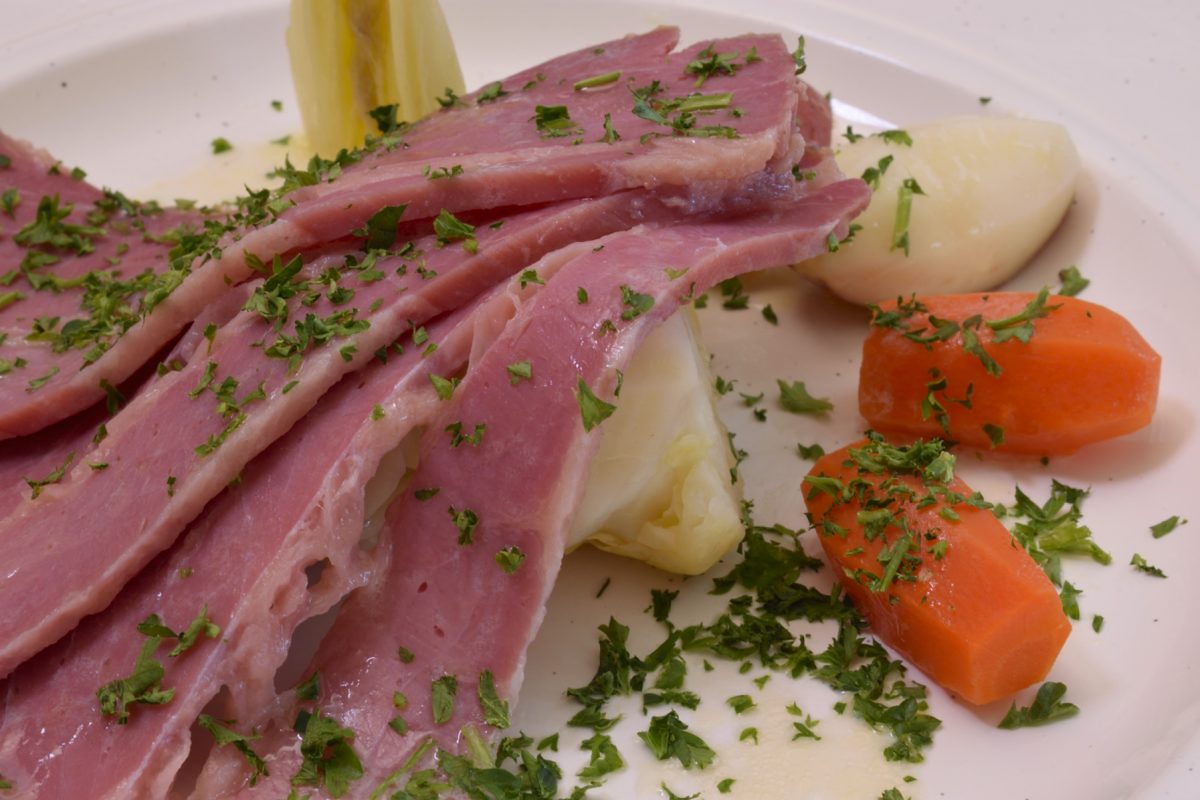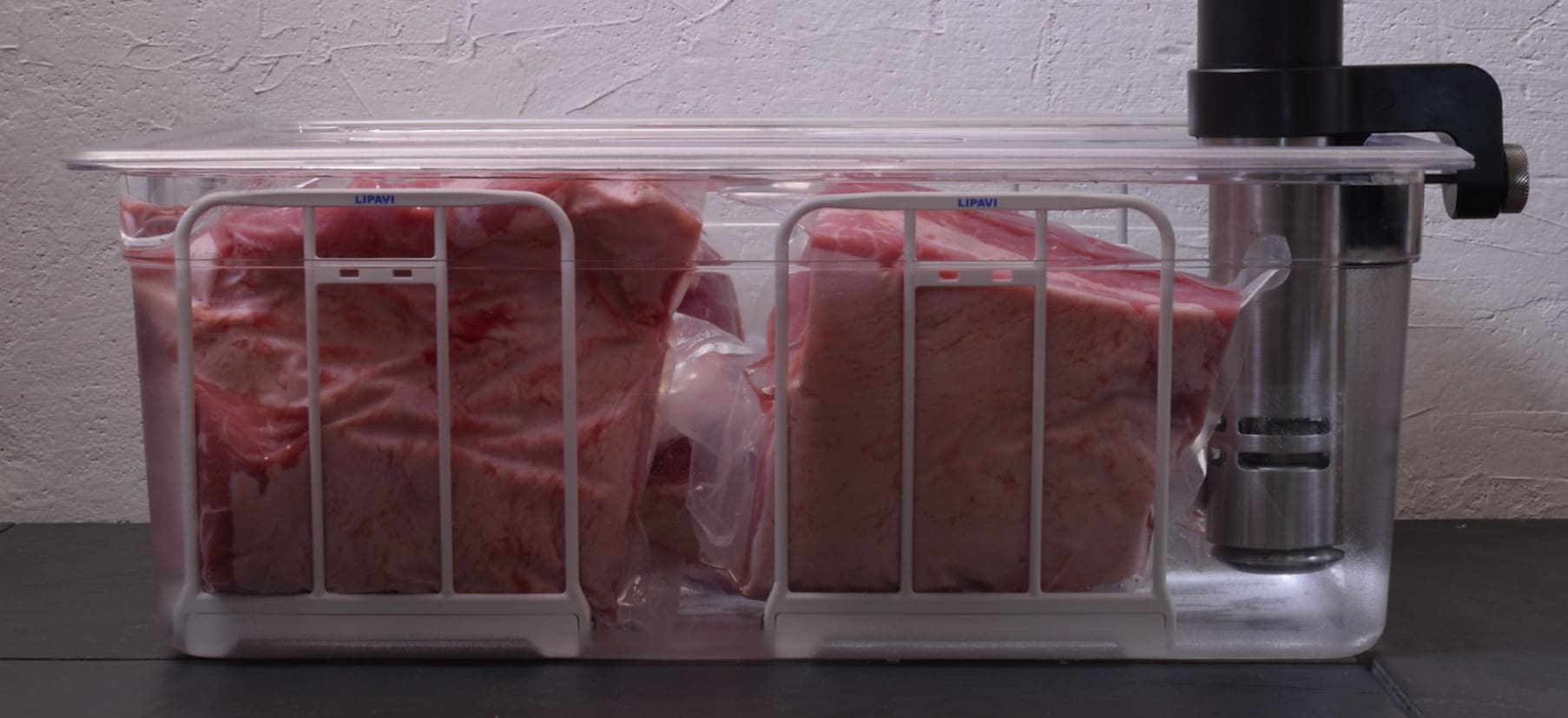Above: Lipavi C20 container, N20 polycarbonate racks. Lipavi C20L-UNIR lid.
Serves 2-3/lb or 4-6/Kg.
Level of difficulty 2.75
Utilizing an entire corned brisket:
Some savings can be realized if you opt to buy an entire corned brisket at one of the big box stores. Usually around 15 lb./7 Kg, if you divide the cut into several packages you will have just about enough to meet your needs over an extended period of time. Sous vide processed, still sealed in the pouch and properly chilled, the corned beef will keep refrigerated for at least two weeks. Frozen, it will keep indefinitely. I usually turn some into pastrami, linked HERE.

Above: from the skin side. The left end is where the cut connects to the shoulder. The right end becomes the belly.

Needless to say, there are many ways to break down the brisket. Some butchers and pitmasters separate the point from the flat, making it easier to remove the layer of fat that sits in between them. I usually cut 3 lb./1.75 Kg chunks that make it intuitive to slice against the grain. The pieces on the right side are the flat, leaner but dryer by nature. The fatty pieces on the left are called the point. 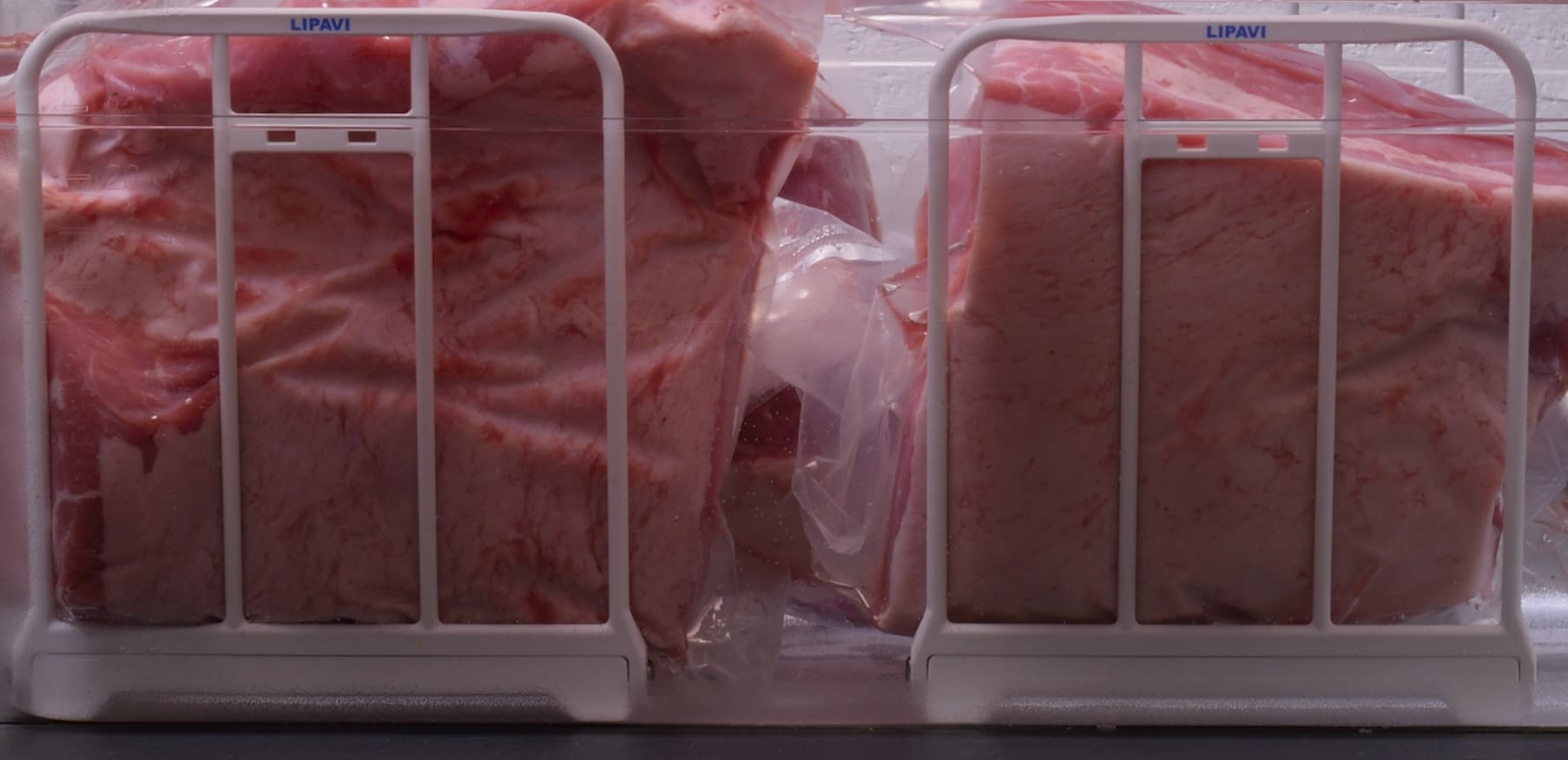
Preparing the vegetables:
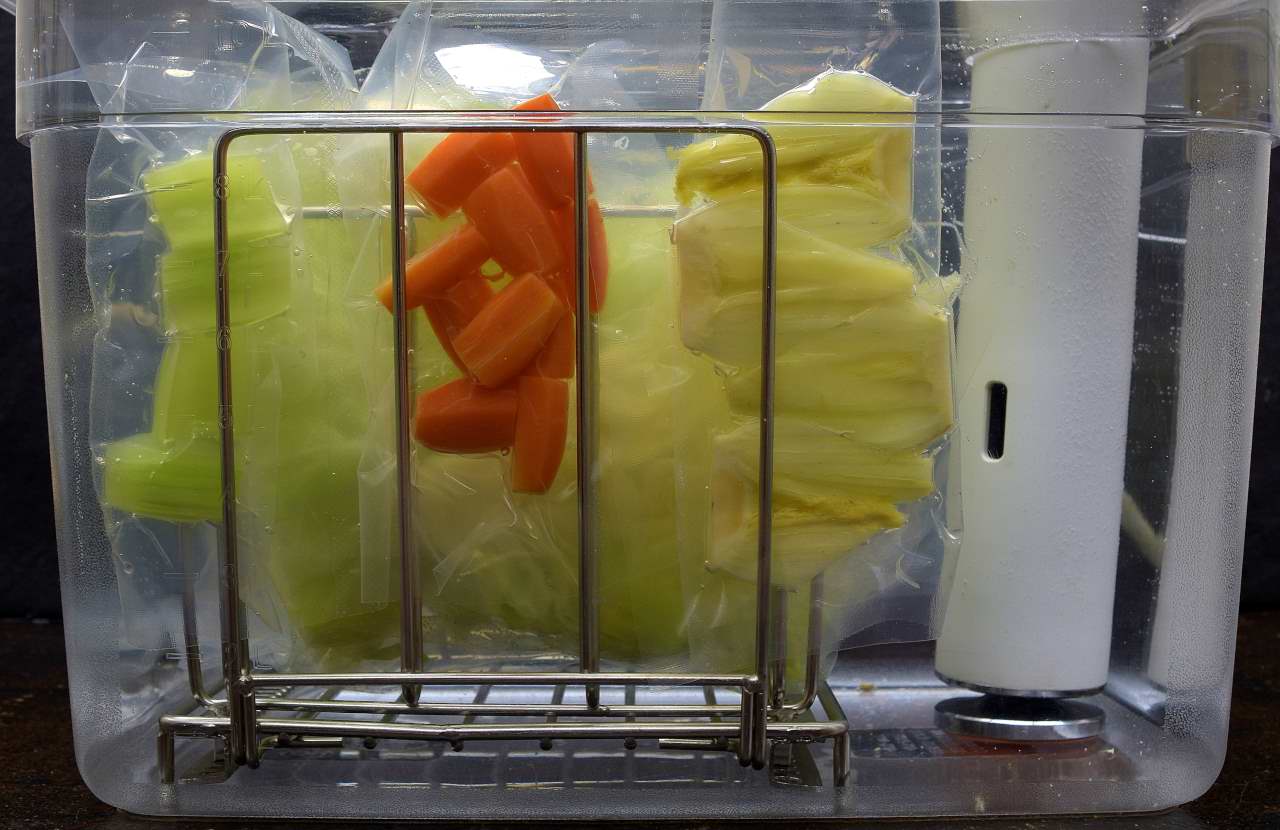
Assuming you plan to use sous vide to prepare the traditional corned beef and cabbage meal, the vegetables can and should be prepared in advance. They can then be conveniently shocked cold and stored in the refrigerator. Vegetables require much higher temperatures to denature than proteins, so they do not usually share the sous vide vessel. If you have more than one sous vide device, you have more flexibility. I usually do the vegetables before the corned beef so there is less scurrying on the day of service.
Preheat the sous vide bath to
183 F/84 C.
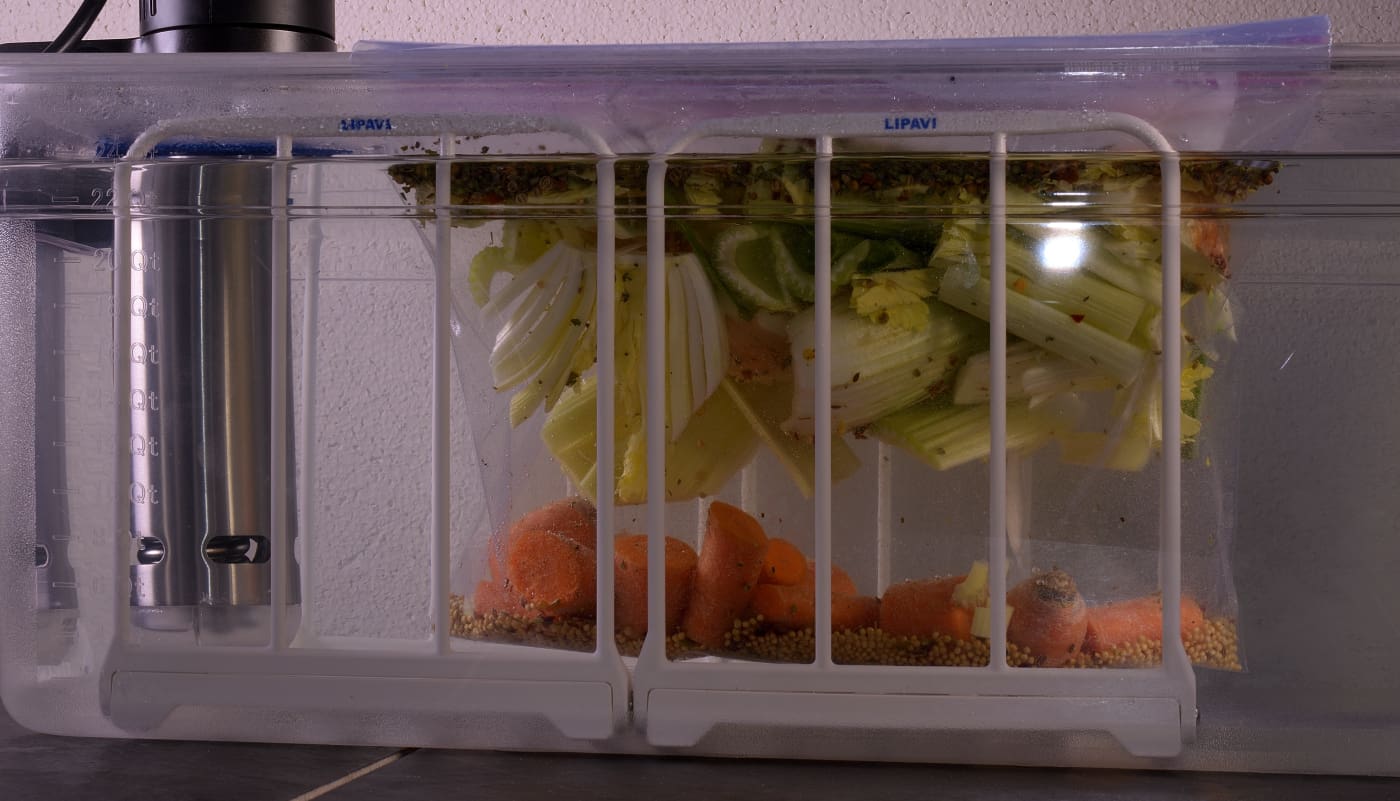
Combine the trim from the carrots and celery and put in a Ziploc gallon sized freezer bag. Add the packet of kernels that came with the corned beef. Put the bag on top of the water in the bath and gradually add 2 qt./2 L water to the bag–it will slowly sink. Drape the opening over the edge of the container and secure with the lid. The stock should be allowed at least 4 hours to fully denature the vegetables and develop the flavor from the spices.
Trim the outer leaves from the cabbage and cut along the spine–the root end will keep it intact. Cut each half into three wedges. Stage the cabbage into a vacuum or Ziploc gallon bag and add 2 cups/500 ml water to the bag. Seal if desired or lower the bag into the bath and drape the opening over the edge of the container.
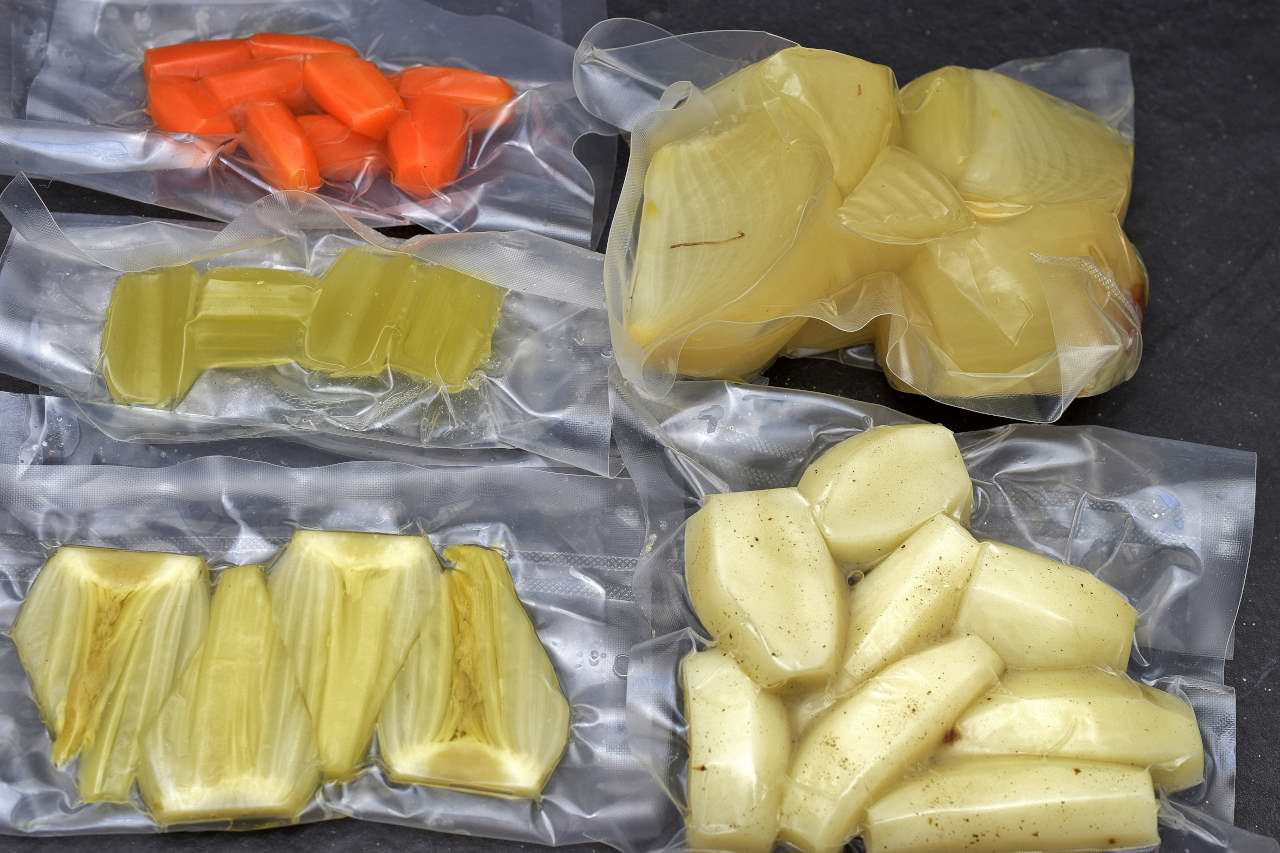
Peel the carrots and cut into bite sized “barrels.”
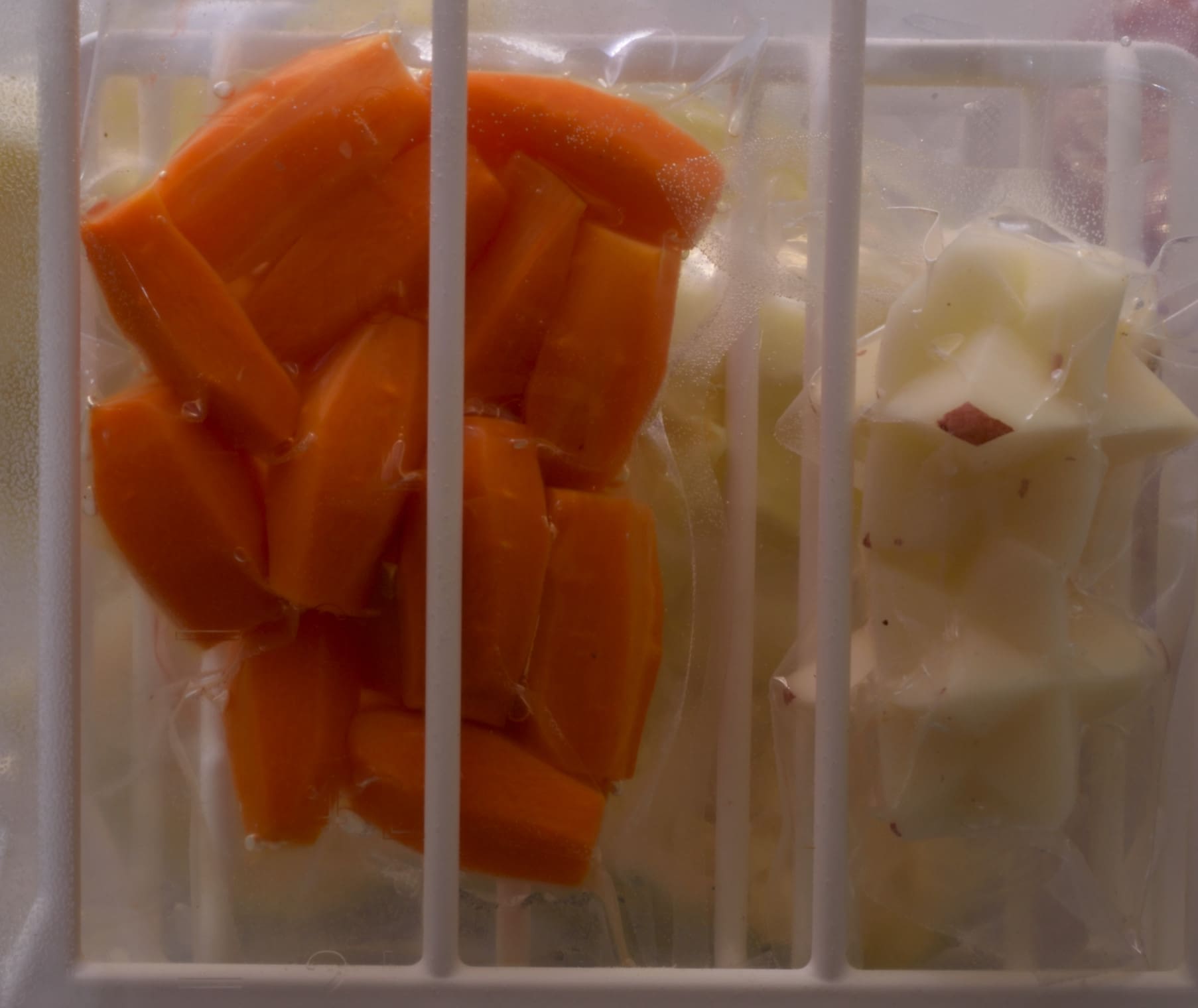
Seal the carrots, celery and onions in vacuum pouches and stage into the bath.
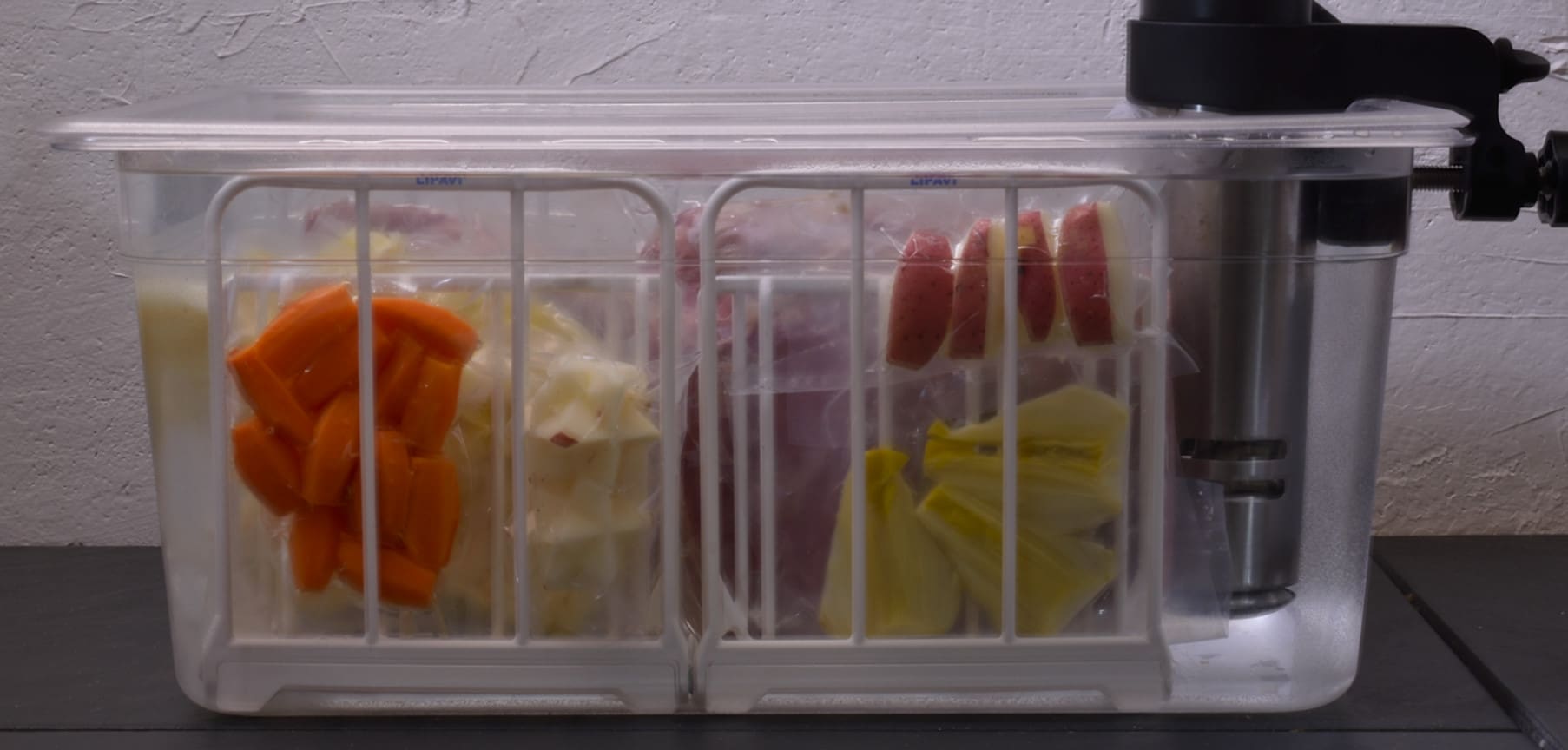
Peel the potato and cut into desired shapes. Seal the potatoes in a vacuum pouch and stage into the bath. Set the timer for 45 minutes.

When the time has elapsed, shock the bags cold in iced water until they achieve 70 F/21 C. Refrigerate to 40 F/4 C until day of service. Allow the stock to continue processing for another three hours. Clarify the stock, using THIS method.
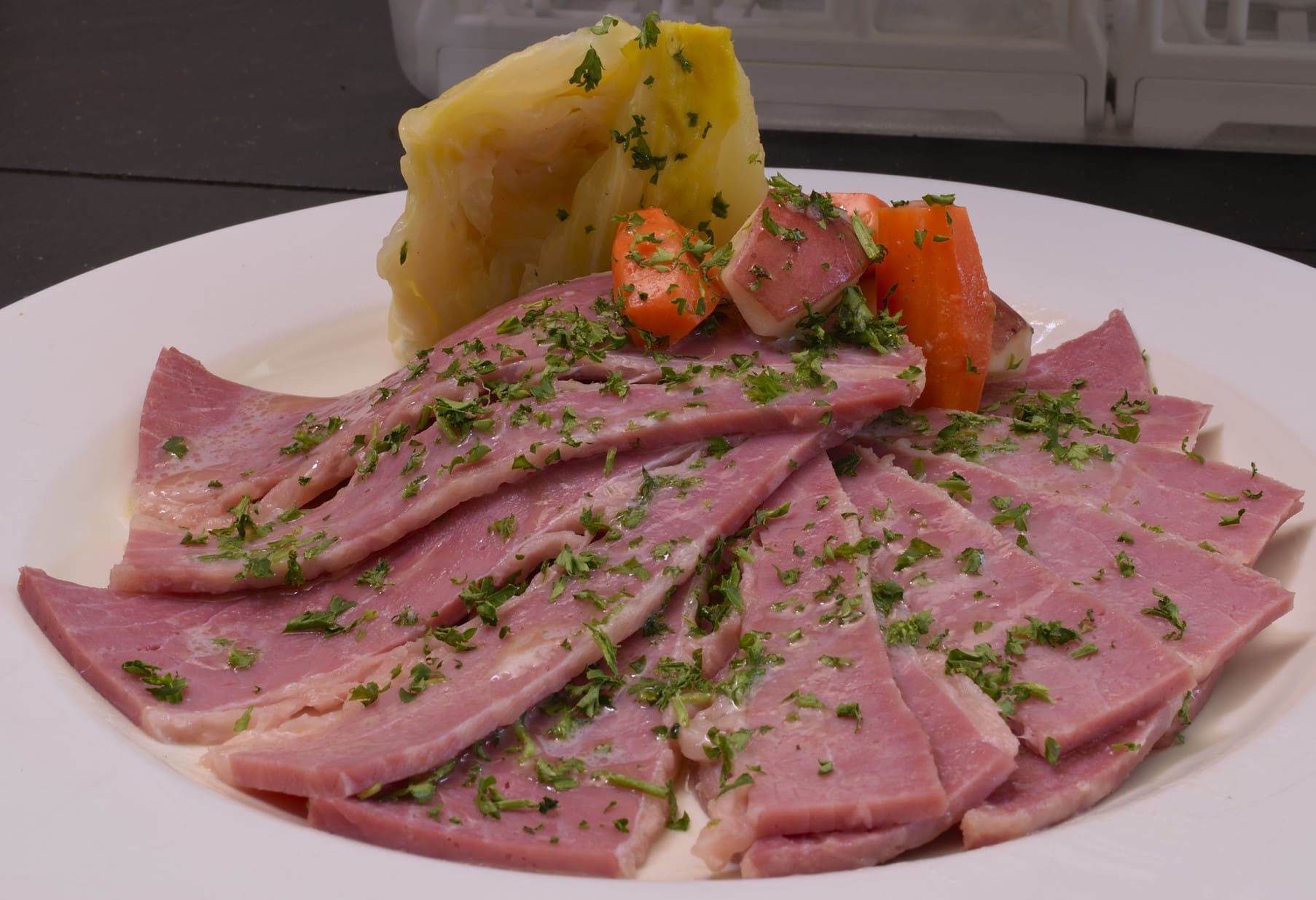
Processing the corned beef
Preheat the sous vide bath to
140 F/60 C
Stage the corned beef into heat rated vacuum bags. The size of the roast has very little effect on sous vide processing time intervals. However, a full sized brisket may not fit in a standard sized bag without being cut in smaller pieces. I recommend processing pieces approximately 3 lb./1.75 Kg for several reasons.
Smaller pieces are easier to handle, easier to shock cold and easier to store. Remember–as long as the seal is not broken on a properly processed and chilled protein, it will keep refrigerated for at least two weeks. Once the seal is broken, food safety guidelines suggest that it be consumed within four days.
Going big?
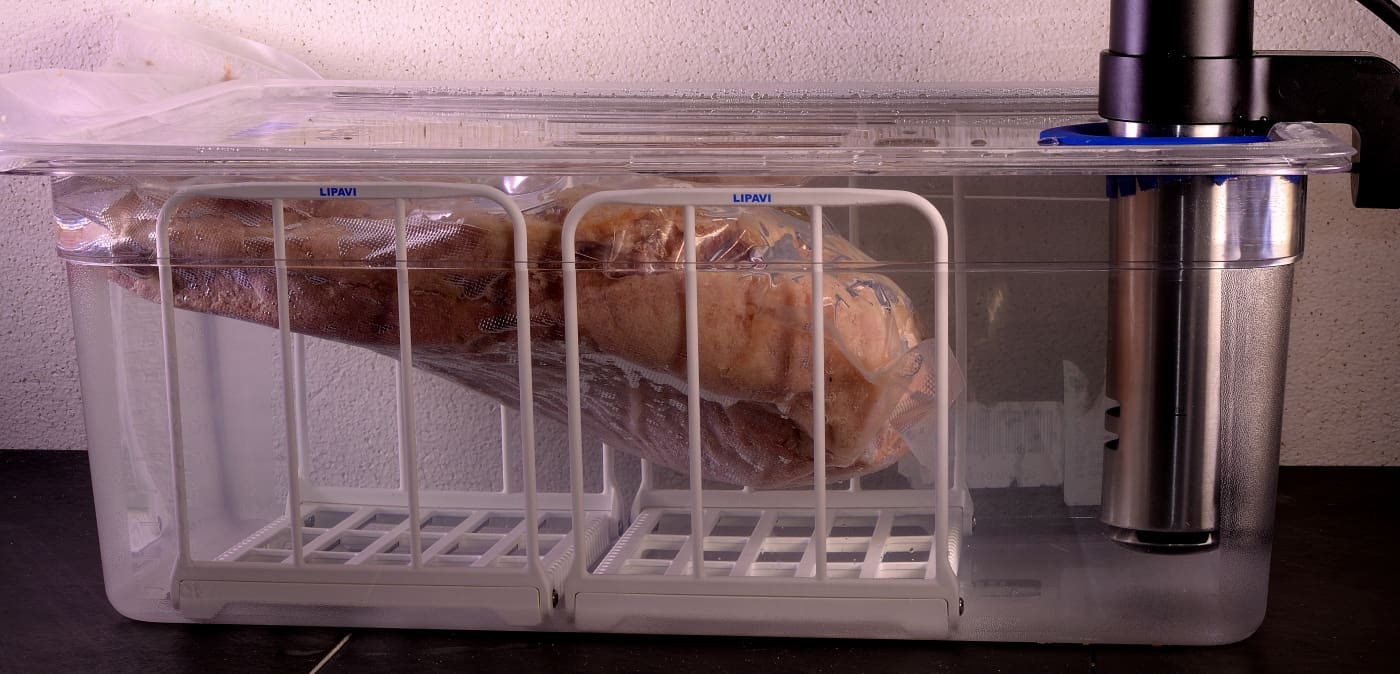
A Lipavi C20 container will usually accommodate a whole brisket. A full sized roast will not take significantly longer than a 2 Kg roast–usually a matter of a couple of hours or so. Sous vide time intervals are almost indifferent to weight/mass and are mostly dependent on the shortest distance from the surface of the specific protein to its geometric center. The temperature parameter remains exactly the same, regardless of the size of the roast.
If you are determined to process a whole corned brisket, extra large sleeves will be required. They are available on line. Sealing the extra large bags can also present a challenge. They are usually sealed twice, at opposing angles. First, the empty sleeve is turned at 45 degrees to seal half of the opening on the Foodsaver heat bar. The bag is turned and the remaining “half” opening is sealed. After loading the whole roast into the large sleeve, the other end of the bag can also be sealed at angles. Vacuum is only applied for the last step.

Sans vide is another good option for this–one end of the bag is sealed at angles, but the other end/opening is draped over the edge of the tank and secured by the lid. This will give you the exact same results as if the bag had been vacuum sealed, and is recommended if you intend to serve the corned beef upon completion of the sous vide process. For best results: if your plan is to cold shock and refrigerate the brisket for a later date, it should be vacuum sealed before processing.
Anticipating the holiday
Once you have loaded the corned beef into the appropriate pouch, stage the sealed roast into the 140F/60C sous vide bath. Set the timer for 48 hours–but do not depend on a clock to measure tenderness. The corned beef may take as long as 72 hours, depending on the characteristics of the individual animal. More on that in a moment. If you are planning on serving corned beef on St. Patrick’s day, you should start it no later than the evening of March 14th.
Sous vide should never be rushed any more than a barbecue should be rushed. There is a reason that the temperatures used are lower than conventional methods. The higher the temperature used, the greater amount of moisture is released from the meat and the more overall damage to the protein matrix occurs. However, if you have no other choice, the corned beef can be sous vide processed at 165 F/74 C for approximately 24 hours with acceptable results–you will notice that there is a lot more liquid in the bag at the end of the process..
Pinching goes with St. Patrick’s day
Rather than pinching people who are not wearing green, you should use the pinch/poke method linked HERE to determine if your corned beef is properly tenderized. Sous vide is very forgiving and there is no precise “moment” before which the roast is under-cooked or after which it is ruined. Sous vide intervals are always open to a certain amount of interpretation and preference. Temperatures should always be used with attention to precision.
Once you have determined that your corned beef is appropriately tender, reduce the temperature in the bath to
129 F/54 C.
This will stop the tenderization process. Conversion of collagen to gelatin is the difference between tough and tender, and this conversion does not occur in significant amounts below this temperature. At this temperature, the corned beef can be kept hot safely in the bath for 24 hours or even longer. Its quality will not deteriorate. How can this be? The corned beef is pasteurized, so any bacteria present have been disabled, and meat will not autolyze (“spoil”) at this temperature. Most sous vide operations include a finishing step that involves searing or smoking the otherwise finished product. Because of the rustic traditional presentation, corned beef is one of very few sous vide items that I recommend to serve “right out of the bag.”
If your corned beef is ready and you intend to serve immediately, skip the Preservation step and proceed to “Service.”*
Preservation:
When the processing time has elapsed, shock the packaged roast(s) in iced water until they achieve 70 F/21 C. This is a very important safety procedure for roasts of this size–whether you are processing sous vide or not. A roast (or a turkey) of this size should NEVER be cooled at room temperature–it just takes too long to meet established safety guidelines.
How can you tell when the internal temperature of a large roast–or even a small one–has achieved 70 F/21 C? That is an excellent question.
Be cool, Man
The packaged roast is first submerged in a container of iced water that is at least twice the volume of the roast. Without explaining the details of how this is calculated, consider that meat is almost the same density as water. In this case, we use a vessel or sink that can hold at least 3 gallons/12 liters of cold water. One way to do this is by siphoning the water out of the sous vide bath and replacing it with iced water from the tap. The ability to do this depends on the logistics of your station/kitchen.
Then what?
Regardless of its size, submerge the roast in the filled vessel/sink. Wait until the ice has all melted. The temperature of the water will be approximately 70 F/21 C. Return in 15 minutes and use a probe or infrared thermometer to measure the temperature of the water. If it is above 70 F/21 C, then the roast is not completely chilled. Drain the vessel/sink, refill with cold tap water and come back in 15 minutes. Repeat this process until the water steadies at 70 F/21 C. Then you will know that it is safe to refrigerate the roast at 40 F/4 C.
Service*
Cut the corner of the bag of stock and strain into a sauce pot. There may be a few pebbles of spice in the stock–that’s okay. Discard the bag with the vegetable trim in it. This is the easy, no mess method.

Cut the corner of the bag with the corned beef and collect the juices. Combine with the stock. Bring to a boil and a raft will develop on the top. Strain through a paper coffee filter or paper towel to remove the albumins.
Return the stock to the pot and add the vegetables. Simmer to 183 F/84 C until the vegetables are hot. Taste the stock for salt, but the liquid from the corned beef will usually provide almost enough by itself. Stage into a large platter to facilitate service. Drizzle with butter.
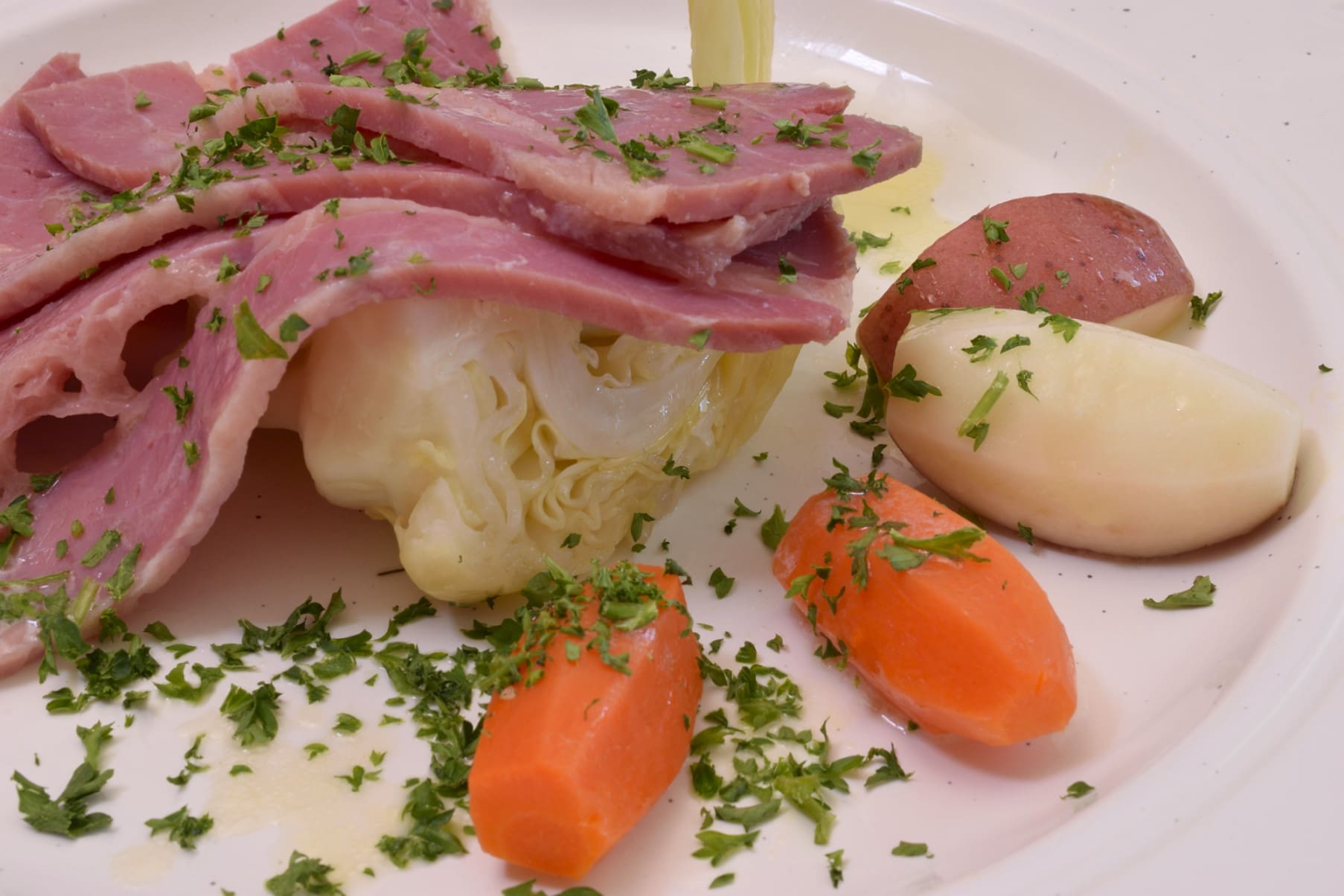
Drain a wedge of cabbage well and place in the center of a plate. Arrange the vegetables around the plate–use the carrots to make the most of the color.
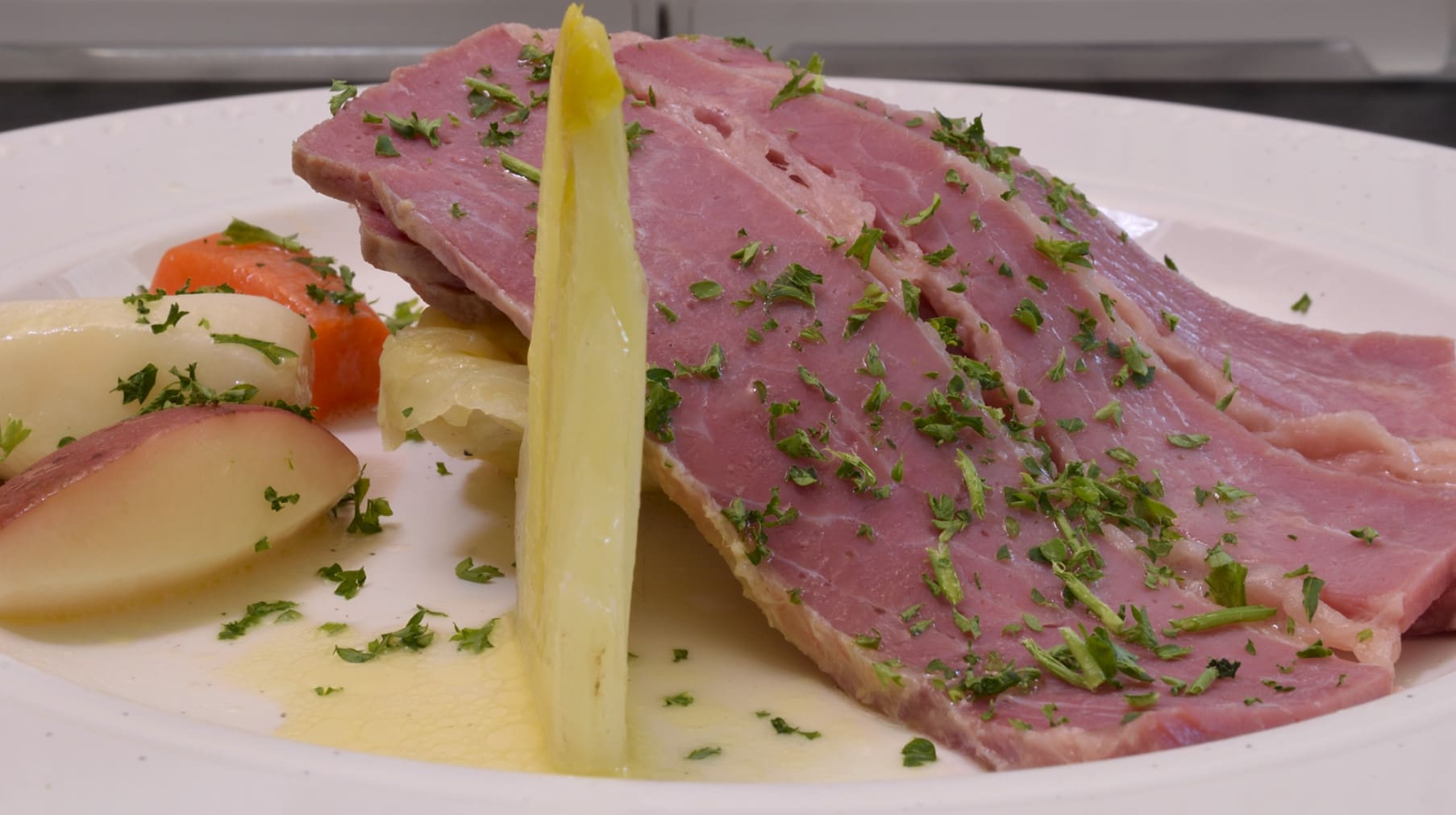
The celery heart provides shape and height.
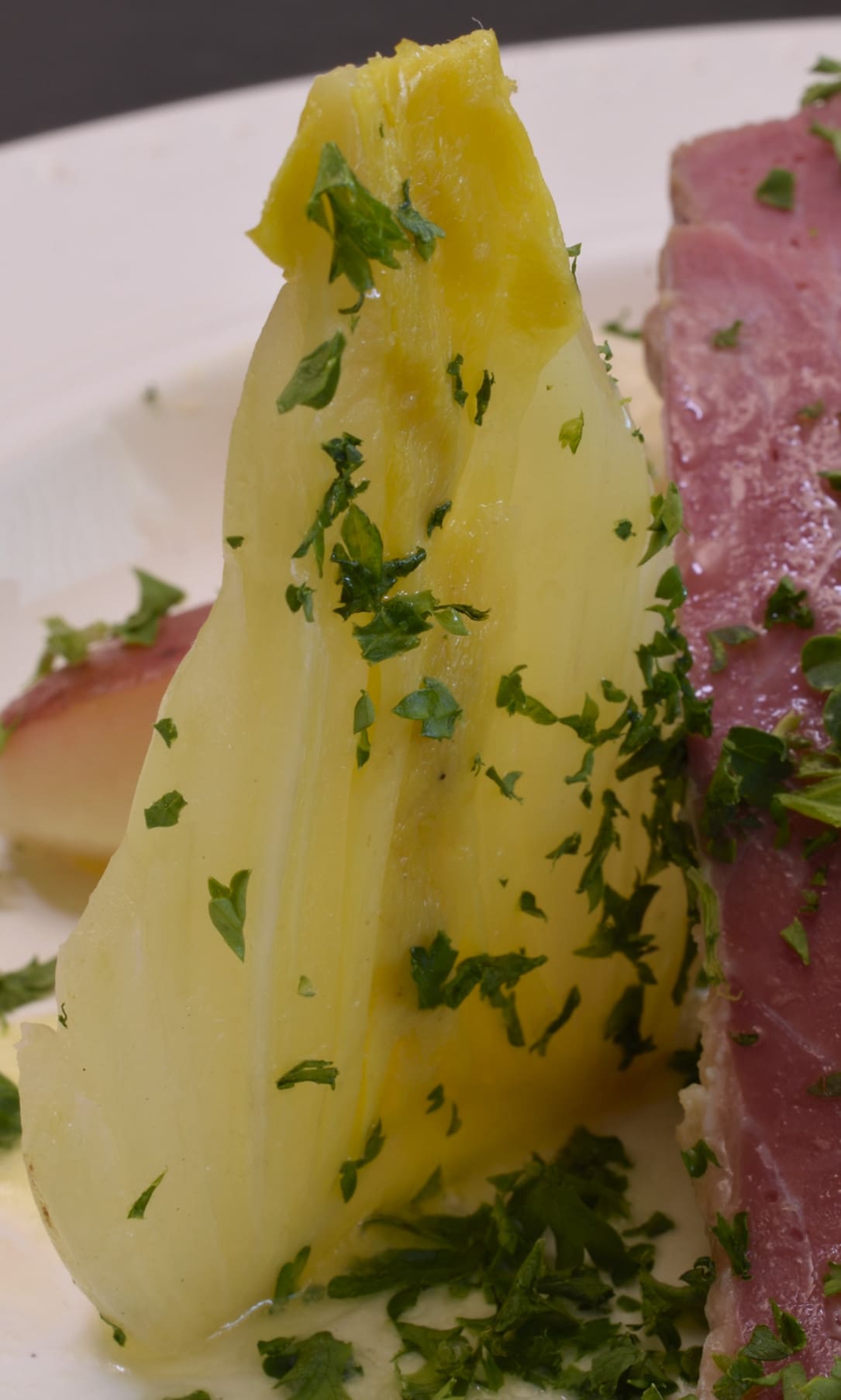
Arrange the slices of corned beef–shingle from right to left, that’s sort of an old school rule that nobody pays attention to any more.
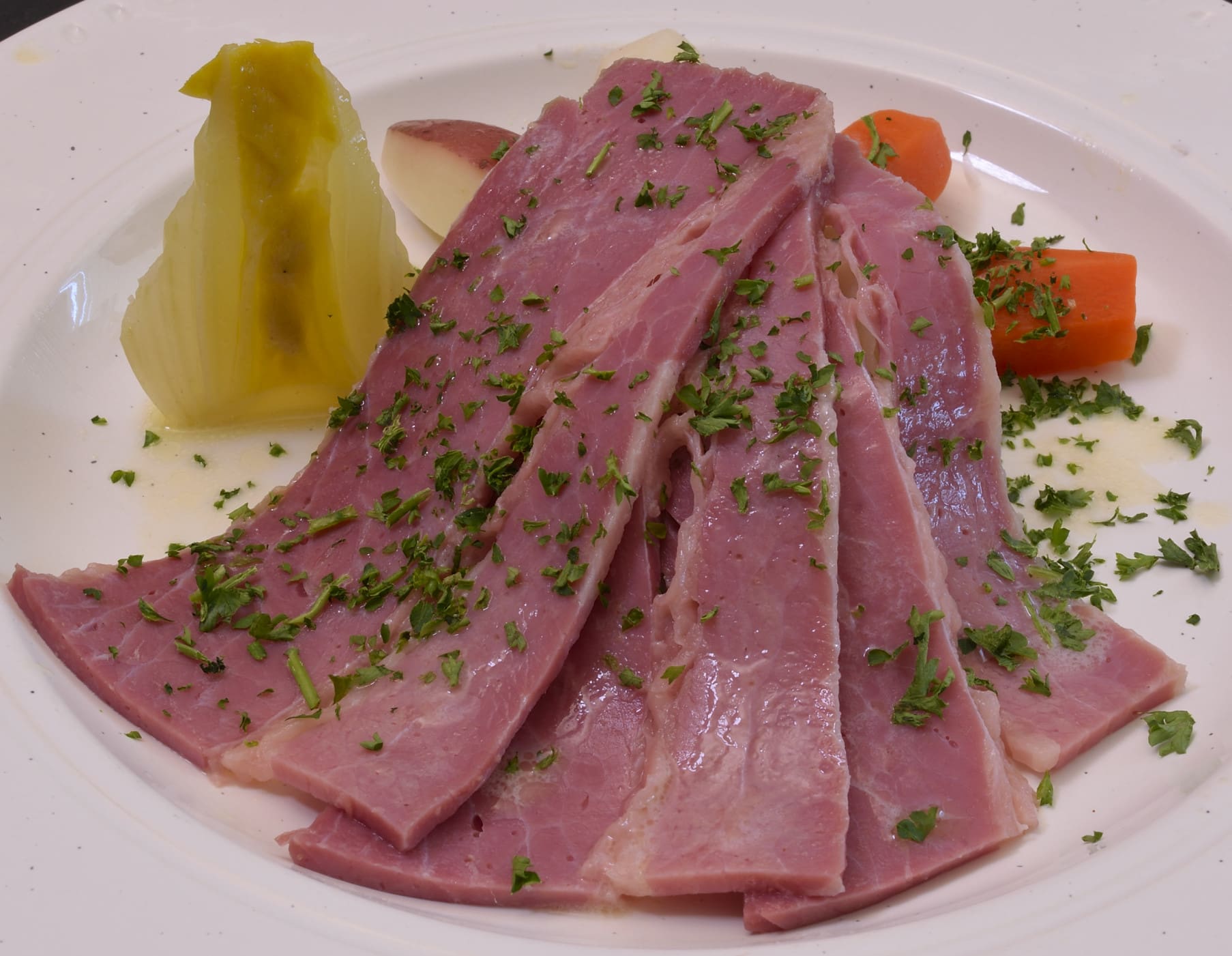
Don’t forget the parsley!
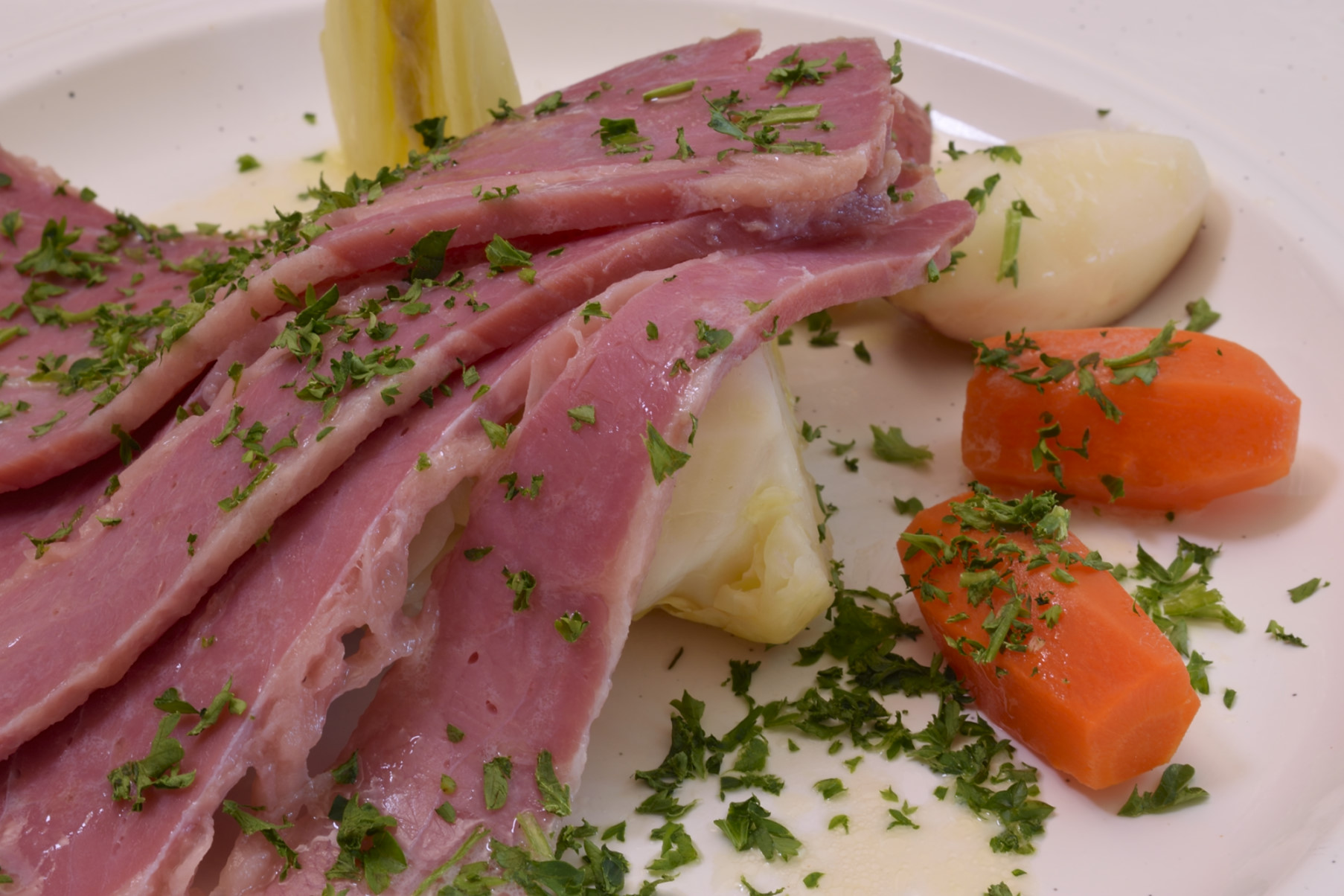
Drizzle the corned beef with a little melted butter.

Happy Holiday!
